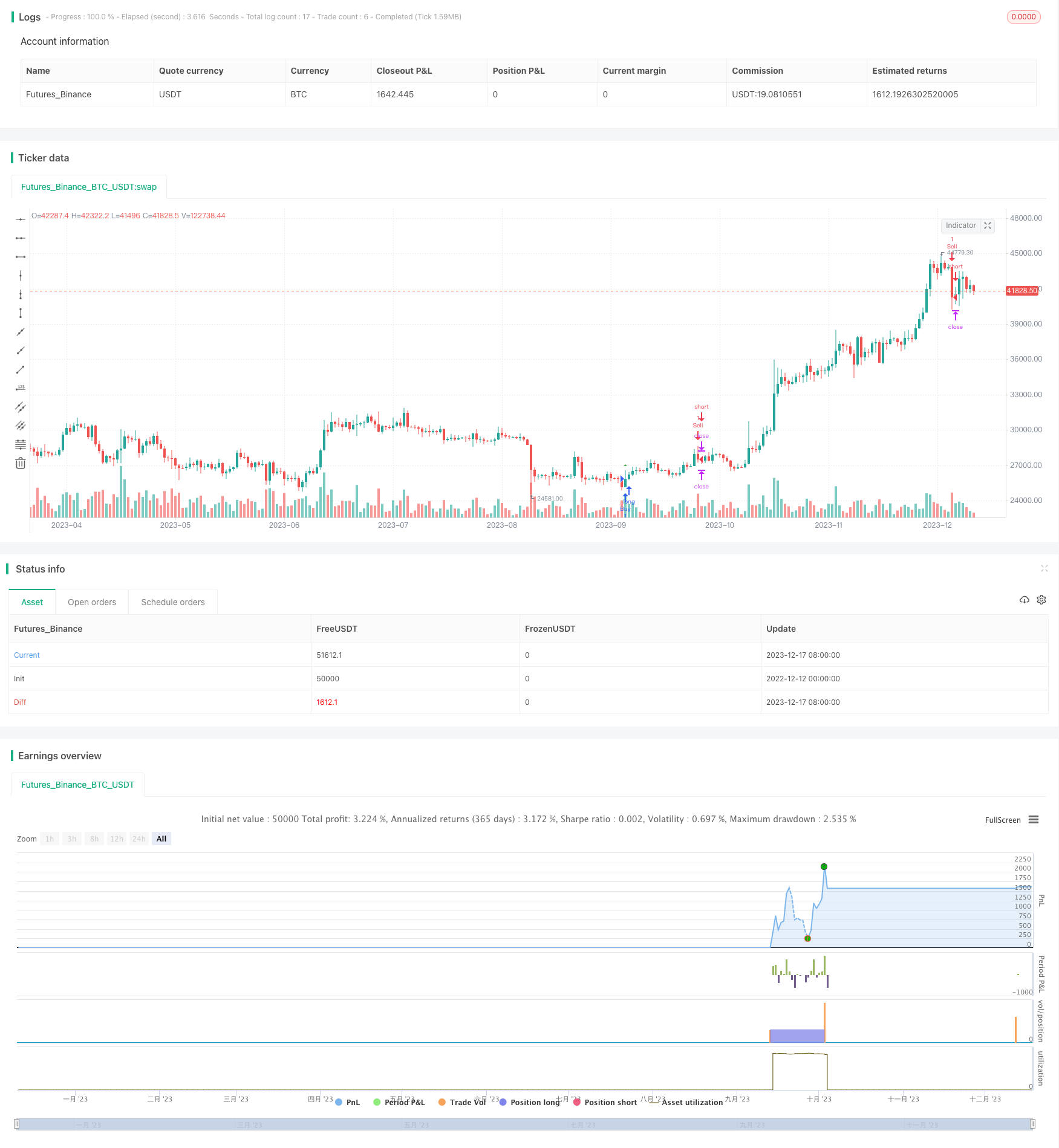
概述
本策略基于股票的动量指标和交易量指标进行买入和卖出决策。当股票价格上涨动能加速且交易量突增时,进行买入;当股票价格下跌动能加速且交易量突增时,进行卖出。该策略捕捉市场群众性行为带来的短期价格动量。
策略原理
股票价格变化趋势的强弱和持续时间决定了动量。该策略通过计算股票价格较前一天的变化量来判断价格动量。当价格连续上涨时,动量为正;当价格连续下跌时,动量为负。该策略同时结合交易量指标。只有在交易量明显高于最近 20 天平均水平(超过阈值)时,才会发出买入和卖出信号。
具体来说,买入条件为动量指标上穿 0 且交易量超过 20日平均交易量的2倍;卖出条件为动量指标下穿 0 且交易量超过 20日平均交易量的2倍。买入后设置止盈位为买入价格的0.8倍,止损位为买入价格的0.5倍;卖出后设置的止盈和止损与之相反。
策略优势
该策略最大的优势是捕捉了市场的短期趋势和群众性行为。当股票价格出现持续上涨或下跌时,大量散户和机构会追随较强的股价动能进行交易。这会形成自我增强的短期价格趋势。该策略正是抓住这一市场心理而产生额外的投资收益。与简单的追踪大盘指数的被动型投资策略相比,该策略的预期超额收益率会更高。
策略风险
首先,股票价格的短期波动无法完全预测和控制。存在因突发事件导致价格出现剧烈反转的风险,此时止损机制无法完全规避损失。其次,交易量数据的质量参差不齐。部分股票的交易量被人为操纵的可能性无法完全排除,这会导致交易信号被扭曲。再次,仅凭借价格和交易量的简单判断无法精确把控市场的短期趋势。当市场出现较大的结构性转折时,策略的效果会受到影响。
策略优化方向
可以考虑结合更多的数据源提高策略效果。比如引入社交媒体等互联网平台中的相关股票讨论量。当一个股票的相关讨论量出现明显增长时,很可能预示着未来股价的变动。这可以作为策略的辅助买入和卖出信号。另外,也可以考虑结合股票的基本面指标,如市盈率、市净率等。这有助于进一步验证价格变动的可持续性,减少错误交易的可能性。
总结
本策略通过捕捉股票价格动量指标和交易量指标的综合变化,实现对市场短期趋势和群众性行为的判断。这种基于大数据和行为金融学原理的量化投资策略,相比传统投资策略而言具有更高的预期收益。但同时也需要充分认识和防范风险,并不断优化策略的输入参数,提升交易效果。
/*backtest
start: 2022-12-12 00:00:00
end: 2023-12-18 00:00:00
period: 1d
basePeriod: 1h
exchanges: [{"eid":"Futures_Binance","currency":"BTC_USDT"}]
*/
//@version=5
strategy('Momentum and Volume Bot', overlay=true)
// Define strategy parameters
profit_target_percent = input(0.8, title='Profit Target (%)')
stop_loss_percent = input(0.5, title='Stop Loss (%)')
volume_threshold = input(2, title='Volume Threshold')
// Calculate momentum
momentum = close - close[1]
// Calculate average volume
avg_volume = ta.sma(volume, 20)
// Buy condition
buy_condition = ta.crossover(momentum, 0) and volume > avg_volume * volume_threshold
// Sell condition
sell_condition = ta.crossunder(momentum, 0) and volume > avg_volume * volume_threshold
// Strategy logic
strategy.entry('Buy', strategy.long, when=buy_condition)
strategy.entry('Sell', strategy.short, when=sell_condition)
// Set profit target and stop loss
strategy.exit('Take Profit/Stop Loss', from_entry='Buy', profit=close * profit_target_percent / 100, loss=close * stop_loss_percent / 100)
strategy.exit('Take Profit/Stop Loss', from_entry='Sell', profit=close * profit_target_percent / 100, loss=close * stop_loss_percent / 100)
// Plotting
plotshape(series=buy_condition, title='Buy Signal', color=color.new(color.green, 0), style=shape.triangleup, size=size.small)
plotshape(series=sell_condition, title='Sell Signal', color=color.new(color.red, 0), style=shape.triangledown, size=size.small)